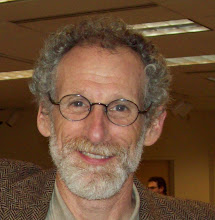Berkeley Elementary is in a poor area in this California coastal town. About 95% of the students that attend the school are on free lunch. The school is comprised of about 98% Hispanics with a little bit of African American, Asian, and White mixed in. Ms. Cal pointed out that the demographics have changed dramatically over the years. The school used to be mostly African American in the 1970s thru the early 1990s, but there was a great mix of races and it was a "pretty cohesive" demographic. However, as years have passed, many African American, Asian, and White military families have retired and moved away and many Hispanics have migrated up from the south to replace them.
Ms. Cal received her education at the University of California, Berkeley where she received her credential in teaching. She first worked at a special education preschool in here. Many of the children at the preschool had severe behavior problems due to chemical dependency when they were born on drugs. After twelve years, she decided that she needed to do something different and was exhausted from working with high-risk students. Therefore, she decided to go into regular education where she has been teaching for thirteen years. She has taught, and is currently teaching, kindergarten for ten years and she taught first grade for two years, and did a first grade/second grade combination class for a year. Therefore, all together she has been teaching for twenty-five years.
When it comes to pedagogy, she believes that it is important to teach "to the whole child." A teacher should not just teach them about English and Math, but they need to learn how to be a "good citizen." In addition, it is crucial to have parental involvement and for parents to be advocates for their children. Most importantly, though she wants her students to become lifelong learners.
Ms. Cal believes that public education is a wonderful institution only when it "runs the way it should be run." She believes that schools need to be viewed as a business; therefore; they should be funded. She feels strongly that teachers should not have to pay for the lack of vision the administration and government have. Ms. Cal thinks that the importance of public education is not common sense for many people and that they need to understand that it is worth funding and supporting. Many people in Monterey Peninsula are retired and they are not going to be running to the polls to vote legislation through, so it is important to gain their support for public education on Monterey Peninsula.
According to the curriculum at Berkeley Elementary, every classroom needs a reading and math area. Therefore, she has a specific reading area, place to put things away, and to work. She loves to have desks in kindergarten, because it teaches them "responsibility." She sets the desks up according to behavior, academic readiness, and socialization skills. She states that one of the children is not behaving very well right now and that she has isolated him. When paring two students together at a table, she has one student that is high academically or socially next to a student that is low academically or socially. In addition, when making the seating chart she tries to form her students into a boy/girl pattern. She puts the desk in groups around the room and she mentioned that she does not usually put the children in groups so early; however, since this year's students are a bit more mature and ready, she was able too. Last year, she said that she had to put the children in stereotypical rows, because grouping them together would have been a nightmare.
Right now, the school is designated as a "School Improvement" school and she thinks what is great about the curriculum now is that the teacher has to engage every student. She also has to set up her schedule according the pacing guide and according to the leadership group at her school.
Since it is such a regimented schedule, she strives to put her own personality into every lesson. Ms. Cal has to create a background where the students feels safe and where they get into a routine where they know what is "going to come up next." She likes to emphasize a schedule and makes sure that students understand why they are learning what they are learning. She finds it difficult to meet the needs of everyone most of the time. Therefore, she makes sure to practice one-on-one learning with struggling students and she talks with parents to let them know what their child is struggling with and what they can practice at home.
The most rewarding aspect of teaching for Ms. Cal is the relationships she has with her students, parents, and the community. From her own experience, she feels that keeping up with the children as they progress through school is important and she has attended many of her past kindergarteners' high school and college graduations. It helps validate the fact that she has helped contribute to them becoming active learners.
In addition, whenever they learn something and they have that "I got it moment" it inspires her and gives her satisfaction. She is enthusiastic about teaching, because she loves what she does, she loves working with children, and she thinks and knows she is good at it.
From doing this interview, I learned that there needs to be a valiant effort to reform schools so that people in the community support them and are really to help fund them. In addition, I learned that the relationships you have with parents, children, and the community are vital in creating a positive learning environment. Most of all, having a pure love of teaching and of working with children is at the core of being a teacher that is unforgettable and remarkable.
Subscribe to:
Post Comments (Atom)




No comments:
Post a Comment